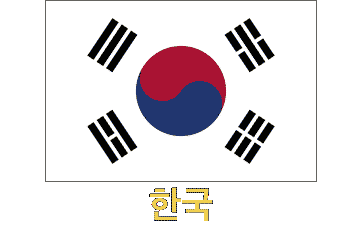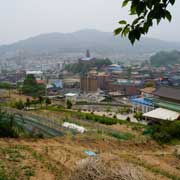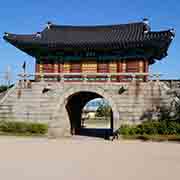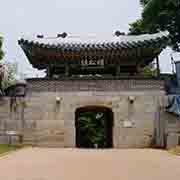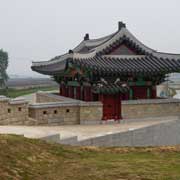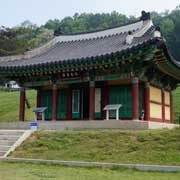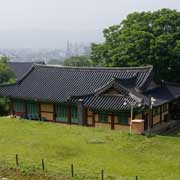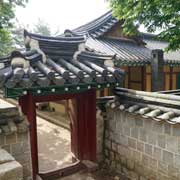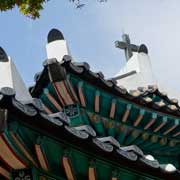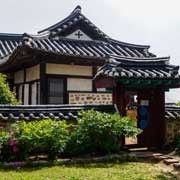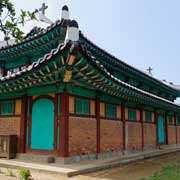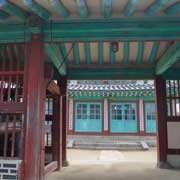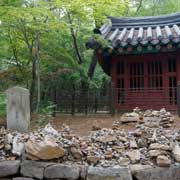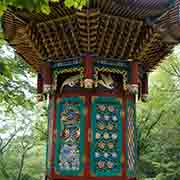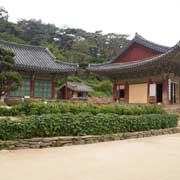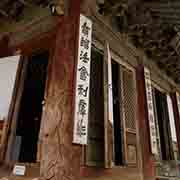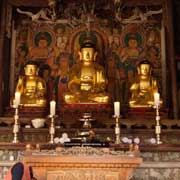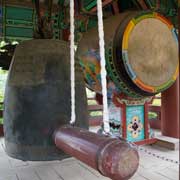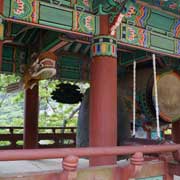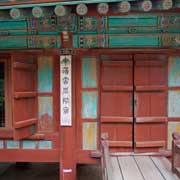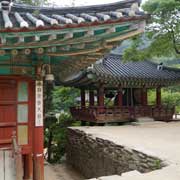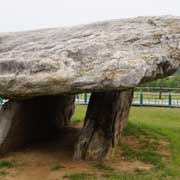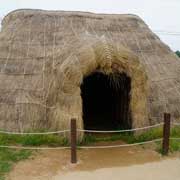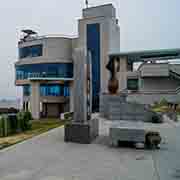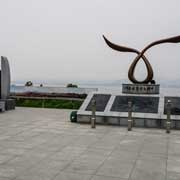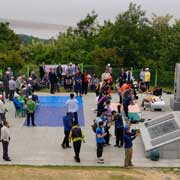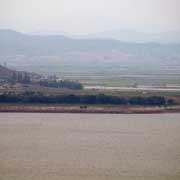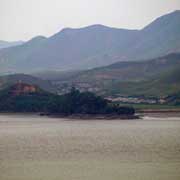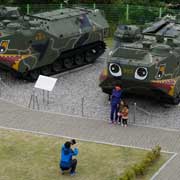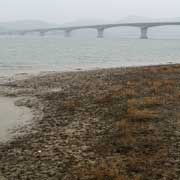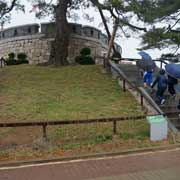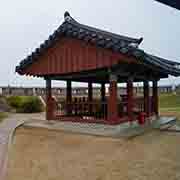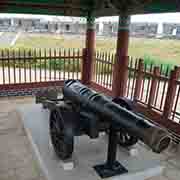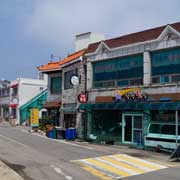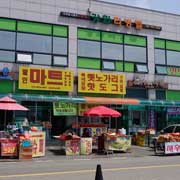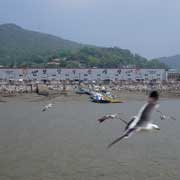Photos of Ganghwa-do, Incheon Municipal Area, Korea
Ganghwa-do, Incheon Municipal Area
Ganghwa Island is in the northwest of South Korea, separated from the coast of North Korea by the main channel of the Han River. It is now part of Incheon Municipal City, but it is a mainly rural island with a turbulent history, separated from the mainland by a narrow channel, which is spanned by two bridges.
you may then send it as a postcard if you wish.
Ganghwa-do has been inhabited from time immemorial, and dolmen, ancient burial chambers dating back to the Bronze age, can be found all over the island; the largest one, Bugeun-ni Dolmen, has a top stone of more than 50 tonnes. When the Korean mainland was under attack by Mongol hordes from the 1230s until the 1270s, King Gojong moved the capital of the Goryeo Kingdom from Songdo to Ganghwa. He started the construction of effective defences against the Mongols here. For nearly thirty years, King Gojong resisted the Mongol invasion before he was forced to make peace with the Mongols in 1259; Gojong died soon after that.
When colonial powers tried to open the hitherto closed “Hermit Kingdom” of Joseon Korea, Goryeongungji Palace in the main town Ganghwa-eup was looted and destroyed in 1866 by French troops, who invaded Korea in response to the execution of nine French Catholic missionaries. And Chojijin Fortress, on the southeastern shore, was built in 1656 for national defence against seashore attacks from foreign enemies and not in vain: it was the scene of many hard-fought battles during the French invasion in 1866, an American invasion in 1871 and confrontation with a Japanese warship, the Unyomaru, in 1875 - gunboat diplomacy which forced Korea to sign the Japan-Korea Treaty of Amity the following year, ending the country’s isolation.
Remains of the fortress of Ganghwa-eup have been restored, as is part of the Goryeongungji Palace. The Jeondeungsa temple, founded in 381 CE, is considered one of the oldest in Korea. It played an important role in Buddhist revival during the Mongol invasions in the 13th century. The temple’s name was changed from Jinjongsa to Jeondeungsa in 1282 after Queen Jeonghwa made offerings of sutras and a jade lantern to the temple. Some of its buildings date to the late Goryeo dynasty (918–1392) and were rebuilt in 1932. Another noteworthy building is the oriental looking Ganghwa Anglican Church in Ganghwa-eup, constructed by the first bishop Charles John Corfe in 1900 and named for Saints Peter and Paul. A royal architect led the building work; since then, several mending works have been done, but the original form is preserved, representing the beauty and harmony of western and Korean architecture.
The Ganghwa Peace observatory on the northernmost point of Ganghwa island, with, from the third floor, views across the Han river channel into North Korea, was once a strictly prohibited area for the general public. Since it opened in 2008, the observatory shows the area’s natural ecosystem and images related to the Korean War (1950-1953). Below it, looking out to North Korea, is the Reunification memorial, a shrine where people remember and pray for their families in the North and reunite with them again.


